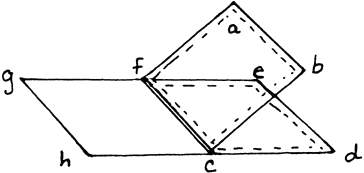

About 120 people gathered in Boston Public Library on April 15 and 16 for the Guild of Book Workers' Second Seminar on Excellence in Hand Bookbinding. Last year in Washington the talks were organized by specialty--edition binding, artists' bindings and so on--and were in the form of lectures illustrated by slides. This year they were in workshop format and dealt with four aspects of binding: basic structures (Peter Waters, Frank Mowery), guarding and endpapers (Don Etherington), binding styles and book construction (Deborah Evetts) and materials (Sam Ellenport and Jean Gunner).
Each attendee could go to two of the four workshops. Tours of the Boston Public Library conservation lab and NEDCC took place on the 15th, and all the workshops were on the second day. In the last general session, after it was all over, there was a show of hands on whether two or more days might be given to workshops next year, and the answer was a resounding yes. People in the audience suggested four or five places where it might be held, including Austin and Baltimore.
Gary Frost and Karen Garlick are coordinating the Standards Committee's exhibit project--a travelling version of the seminars, with examples--to reach members who live at a distance. It will concern four fields of bookbinding, each of which has its own "production staff": artists working in book format (Hedi Kyle), limited edition hand binding (Carol Joyce), designer bookbinding (Lage Carlson and Gerard Charrière) and Conservation book work (Pamela Spitzmueller).
Each workshop was taped, so there is a possibility of having a written record of the proceedings. (Last year the talks were taped too, hot incompletely, and no transcripts have appeared to date.)
Here are a few excerpts from notes taken during the tours, introductory and closing talks, and workshops:
The only hand goldbeater in the country lives across the street from Bill Minter. He will do palladium. Somebody recommended Cornelius and Son in London, whose address is in the Designer Bookbinders' supply list.
The variety of cover cloth available in this country continues to dwindle. Holliston's Passbook Vellum was recommended. Imports from Europe and Japan look good: linen, linen/cotton, rayon, and rayon/silk. They are dyed before weaving, so the color won't scrape off. Many are paper-backed, bonded with PVA. Rayon is durable and tools well, but the cost at the retail level is about 50% higher than usual.
Harmatan has a near-monopoly on the supply of skins for the major tanneries in Europe.... Research on the permanence of bookbinding leather has continued at BLMRA and a study by Betty Haines will be published this July or August, edited by Mirjam Foot. Some of the conclusions: 1) Skins can be retanned in the shop for permanence with aluminum triformate. 2) The surface can be made resistant to atmospheric acid by use of a paste called 5C6000 (trade name), applied like leather dressing. The use of potassium lactate or citrate is now thought to do little good (no evidence was offered for this reevaluation).
Adding magnesium carbonate to PVA just messes it up. Even if the PVA is acid, it should be left that way. A very small amount of PVA added to methyl cellulose makes it much more flexible. Lots of materials in the collection Jean Gunner takes care of are now crumbling because they were treated in the 1960s and 70s with soluble nylon.
Several people gave hints on keeping paste from separating: if it separates, just heat it up again; don't put it in the refrigerator; and don't store it in clear glass, but use an opaque container. When it has set, the gel structure can be broken up by straining through cloth or putting it in a blender.
To tear japanese tissue, use methyl cellulose in a ruling pen. To guard pages without increasing thickness of the book, use strips ¼" (or did he say 1/8"?) wide. A homemade gadget called a guardamatic, invented by Barbara Meier-James, was demonstrated. It overcame much of the awkwardness of using paper to help the pasted guard around the section. The sketch below is partly from memory.

The base, edgh, is something rigid, maybe Plexiglas. The part that folds around the section is a piece of terylene (like dacron), abde, attached with double sticky tape to the base and to a piece of Mylar above (abcf). There is a small gap between the upper and lower stiffenings of the terylene at cf.
To keep the brush and paste from bunching up the torn edges of the mending paper, spread the paste on a lithe stone or Plexiglas, lay the strips on it, rub down through a strip of waste paper, and remove the strips. Several can be done at a time.
Don Etherington showed a way to keep paste for three or four months without putting fungicide directly into it: put a couple of drops of formaldehyde onto a cotton ball and tape the ball to the inside of the lid of the paste jar.
When sewing on tapes, circle the tapes at the end-sheets to give a continuous line of thread on the inside, A good source of leather is P & L Leather in Brighton, England--they aim to please, will dye one skin at a time to match your sample.
Frank Mowery described the hollow-back leather binding with raised cords, which is done like a normal tight-back binding, but without adhering the leather to the spines the alum-tawing of parchment; and pack-sewing, in which the thread circles or winds around the sewing support one or more extra times at each sewing station. In the same workshop, Peter Waters presented 34 questions, not to give the idea that anything goes, but to discourage rigidity of thinking about binding structures.